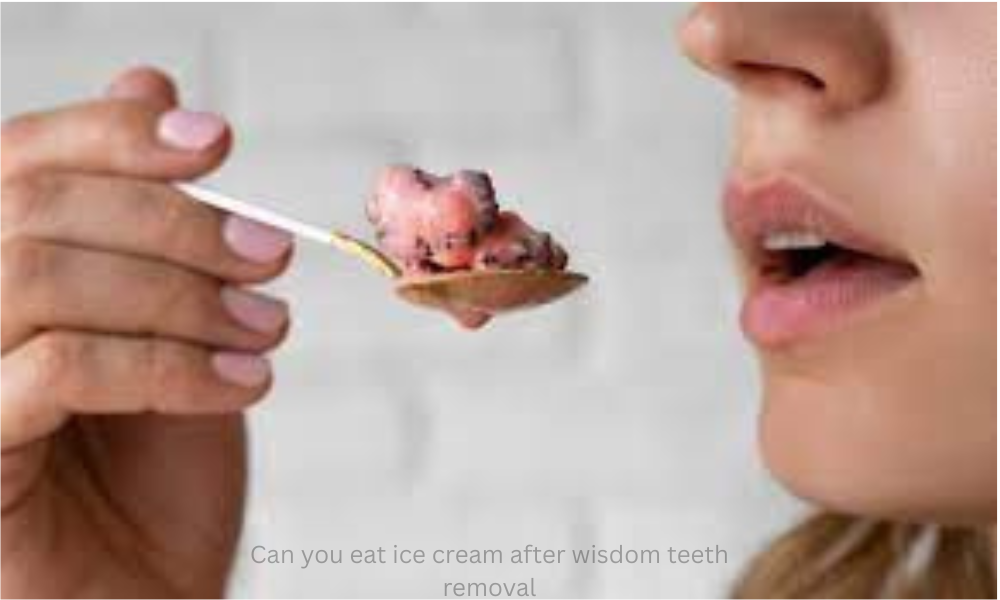Can You Eat Ice Cream After Wisdom Teeth Removal?

Yes, you absolutely can! In fact, eating ice cream after wisdom teeth removal is not only allowed—it’s encouraged by most oral surgeons, at least for the first day or two.
Let’s dive into the dos and don’ts of enjoying your favorite frozen treat after this common dental procedure.
Table of Contents
Immediate Answer to Your Question
Right after your surgery, your mouth is sore, your gums are swollen, and you’re probably not in the mood for chewing anything.
It’s cold, soft, and doesn’t require any effort to chew—making it an ideal post-surgery snack.
Why Ice Cream is Often Recommended After Surgery
Doctors and dentists often recommend cold and soft foods because:
- Cold temperatures reduce swelling
- Soft textures prevent damage to stitches
- Low-acid, dairy-based items soothe the mouth
Ice cream ticks all these boxes.
How Ice Cream Helps Post-Surgery
Soothing the Inflammation
The cold from ice cream works similarly to an ice pack. It helps reduce inflammation and bleeding in the area where the teeth were removed.
Numbing the Pain
That chill isn’t just refreshing—it can help numb your sore gums, offering temporary relief from post-op discomfort.
Gentle on Stitches
Since it’s creamy and smooth, ice cream won’t get caught in your stitches or irritate the surgical site.
Best Types of Ice Cream to Eat
Soft-Serve vs. Hard Ice Cream
Go for soft-serve or melted scoops of traditional ice cream. Hard and chunky varieties might require chewing, which you want to avoid.
Avoid These Flavors
Skip ice creams with:
- Nuts
- Cookies
- Caramel swirls
- Chocolate chips
These can irritate your healing gums or get stuck in the extraction site.
Homemade Options
Consider making banana-based vegan ice cream or blended frozen yogurt for a healthy, gentle treat.
When to Eat Ice Cream After Surgery
First 24 Hours
Ice cream is perfect during the first day post-surgery. It’s soft, cold, and comforting. Stick to plain vanilla or chocolate.
After 2–3 Days
You can continue eating ice cream, but it’s a good idea to start adding other soft foods to get more nutrients.
What to Avoid While Eating Ice Cream
Crunchy Add-ons
Toppings like sprinkles, cookie crumbles, or nuts can injure the extraction site or disturb blood clots.
Extreme Cold Sensitivity
Some people develop tooth sensitivity after surgery. If the cold makes your teeth hurt, try letting your ice cream soften before eating.
How Long Should You Stick to Soft Foods?
Dentists typically recommend sticking to soft foods like ice cream for 3 to 5 days. After that, you can gradually return to your normal diet, depending on how you’re healing.
Other Foods That Are Safe to Eat
Smoothies
Packed with nutrients and easy to consume, smoothies are great—but avoid using a straw to prevent dry socket.
Mashed Potatoes
Warm (not hot) mashed potatoes provide carbs and comfort without harming your stitches.
Yogurt
It’s cold, soothing, and full of probiotics to support your immune system.
Foods to Avoid Completely
Spicy and Acidic Foods
These can irritate the wounds and slow down healing.
Sticky or Crunchy Foods
They can dislodge the blood clot, leading to a painful condition called dry socket.
Signs You Should Stop Eating Ice Cream
If you experience:
- Tooth sensitivity
- Swelling that worsens
- Prolonged bleeding
- Headaches or stomach upset (especially if lactose intolerant)
Then it might be time to pause or reduce your intake.
What Dentists Recommend
Most dentists will give you a post-op food list, and ice cream is often at the top of it—for the first 48 hours. After that, they usually recommend introducing warm soups, eggs, and other soft proteins.
Tips for Faster Healing
- Drink plenty of fluids (no straws!)
- Get plenty of rest
- Rinse your mouth gently with salt water
- Follow your dentist’s post-op instructions
- Avoid smoking or alcohol
Is Ice Cream Bad for Everyone?
No, but if you’re lactose intolerant, diabetic, or sensitive to cold foods, you might want to skip it or try dairy-free alternatives like sorbet or non-dairy frozen desserts.
Final Verdict on Ice Cream Post Wisdom Tooth Surgery
So, can you eat ice cream after wisdom teeth removal? Absolutely! It’s not only allowed but recommended. Just stick to soft, plain flavors, skip the toppings, and avoid extremes in temperature.
It can be your best friend in the early days of recovery—just don’t rely on it as your only food source for too long.
Conclusion
After wisdom teeth removal, ice cream is more than just a comfort food—it’s a tool for healing. Cold, creamy, and easy on the mouth, it checks all the boxes for what you need right after surgery.
As long as you’re smart about how and when you eat it, ice cream can make recovery a little sweeter. Just remember to balance it with other soft, nutritious foods to get back on your feet faster.
FAQs
Can I eat chocolate ice cream after wisdom teeth removal?
Yes, as long as it doesn’t contain chunks or hard mix-ins like chips or nuts.
Is it okay to eat ice cream sandwiches or cones?
No, those are too hard and can damage the healing site. Stick to soft varieties.
How many times a day can I eat ice cream post-surgery?
Moderation is key—once or twice a day is fine, but don’t make it your main meal.
Can eating ice cream cause dry socket?
Not directly. But using a straw with milkshakes or not following care instructions can.
Is sorbet a good alternative to dairy ice cream?
Yes! Sorbet is smooth, cold, and often easier to digest for people with dairy issues.






